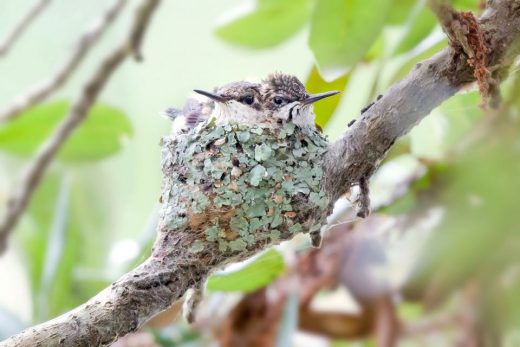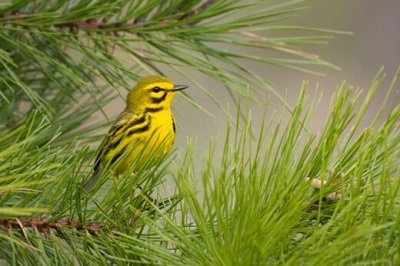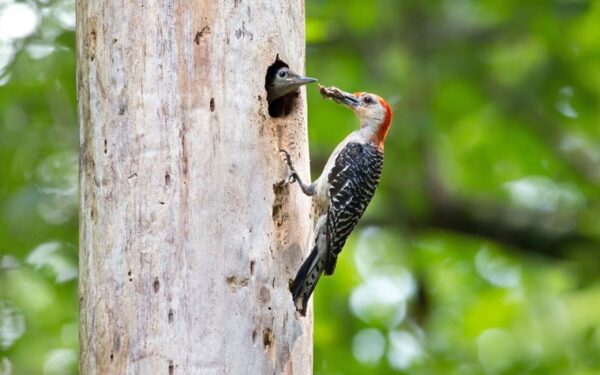
Ruby throated hummingbird nest, photo by Bob Schamerhorn
The results are in on the second field season of the 2nd Virginia Breeding Bird Atlas! The Atlas is a project of the DWR in partnership with the Virginia Society of Ornithology and the Conservation Management Institute at Virginia Tech. It is the largest bird survey project currently taking place in Virginia, both in terms of geographic coverage (the entire Commonwealth) and the number of species it surveys (over 200 breeding species). It is also the Commonwealth’s largest citizen science project, with over 750 volunteer Atlasers having contributed their observations to date. Their participation has led to submission of nearly half a million bird records since the Atlas launched in the spring of 2016!

Prairie Warbler at Powhatan Wildlife Management Area. Photo by Bob Schamerhorn.
Thanks to its geographic position, topography and climate, Virginia has one of the highest bird diversities among states in the Eastern US. The Atlas is, fundamentally, a 5 year effort (2016-2020) to document the current geographic distribution of Virginia’s breeding birds. Comparison of these results with those of the 1st Virginia Breeding Bird Atlas (conducted 1985-1989) will shed light on the changes that individual species have undergone.
This analysis will give us a clearer idea of the current status of our breeding bird species, including identifying those birds that are losing ground in the Commonwealth and which may benefit from conservation action. A separate but related project will allow us to map the densities of various bird species on the landscape (i.e. where in Virginia they are more and less abundant), allowing us to better target future conservation on the ground.
We are off to a great start in these first two years of the Atlas, but there is still a lot of ground to cover, as several regions of Virginia remain under-surveyed. We welcome participation by anyone with an interest in birds and their conservation.

Red bellied Woodpecker with nestling. Photo by Bob Schamerhorn.
While bird identification skills are necessary in order to most effectively conduct surveys, we also welcome contributions from beginners, who can be paired up with more experienced Atlas volunteers to learn the ropes. Surveys are easy to conduct and can be done at times that fit into your busy schedule. Priority areas for Atlas surveying are scattered throughout the state and may even be in your backyard. Most important are an enthusiastic attitude and a willingness to learn!
We invite you to view the year 1 and year 2 field season summaries, as well as more background information on the Atlas project. Also be sure to visit the Atlas website for information and resources on becoming involved or otherwise supporting the Atlas.
Help spread the word for this important project that will better help us address the conservation needs of Virginia’s diverse bird community!


